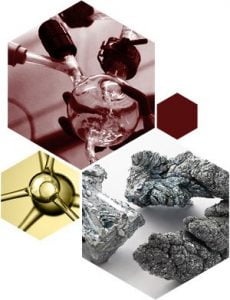
Barium Hydroxide Octahydrate
Properties
- We can offer items in bulk or custom. For other quantities or purities, please request a quotation.
- All prices are subject to change.
Related Products
Information about Barium Hydroxide Octahydrate / CAS 12230-71-6
Barium Hydroxide octahydrate (Ba(OH)₂·8H₂O), is a white, odorless inorganic compound known for its strong alkaline properties and high solubility in water. Its reactivity makes it a crucial reagent in neutralizing acids and precipitating sulfates. Due to its high solubility, it efficiently dissolves in water, facilitating quick and effective chemical reactions in both industrial processes and laboratory research.
Barium Hydroxide serves as an additive in the petroleum industry. It is used in lubricating oils, neutralizing acidic byproducts and improving stability, which ultimately extends machinery lifespan. It also enhances oxidative and thermal stability, ensuring machinery operates efficiently.
In polymer manufacturing, it plays a critical role in catalytic processes that ensure consistency, durability, and performance of end products. It is also a key catalyst in the manufacture of thermoplastics, particularly in phenolic resins, which are widely used in adhesives, coatings, and molding compounds.
Researchers in materials science continue to explore its potential in advanced electroceramic materials, such as next-generation capacitors and dielectric composites. Barium Hydroxide octahydrates efficiency in precipitating sulfates has positioned it as a critical reagent in sulfate removal strategies, particularly in power plants and mining industries, where sulfate contamination is a major concern.
- Utara, S., & Hunpratub, S. (2018). Ultrasonic assisted synthesis of BaTiO3 nanoparticles at 25°C and atmospheric pressure. Ultrasonics Sonochemistry, 41, 441-448.
- Özen, M., Mertens, M., & Cool, P. (2024). Exploring barium-titanium-peroxo-hydroxide as an excellent single-source precursor for crystallographically diverse barium titanate ceramics–parametric study. Ceramics International, 50(24), 53209-53221.
Safety
- H302+H332 Harmful if swallowed or if inhaled.
- H314 Causes severe skin burns and eye damage.
- P260 Do not breathe dust/fume/gas/mist/vapours/spray.
- P264 Wash skin thoroughly after handling.
- P270 Do not eat, drink or smoke when using this product.
- P271 Use only outdoors or in a well-ventilated area.
- P280 Wear protective gloves/protective clothing/eye protection/face protection.
- P301+P312 IF SWALLOWED: call a POISON CENTER or doctor/physician IF you feel unwell.
- P303+P361+P353 IF ON SKIN (or hair): Remove/Take off Immediately all contaminated clothing. Rinse SKIN with water/shower.
- P304+P340 IF INHALED: Remove victim to fresh air and Keep at rest in a position comfortable for breathing.
- P305+P351+P338 IF IN EYES: Rinse cautiously with water for several minutes. Remove contact lenses, if present and easy to do. Continue rinsing.
- P363 Wash contaminated clothing before reuse.




